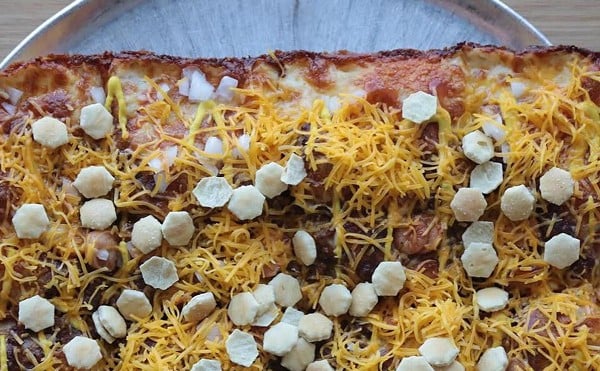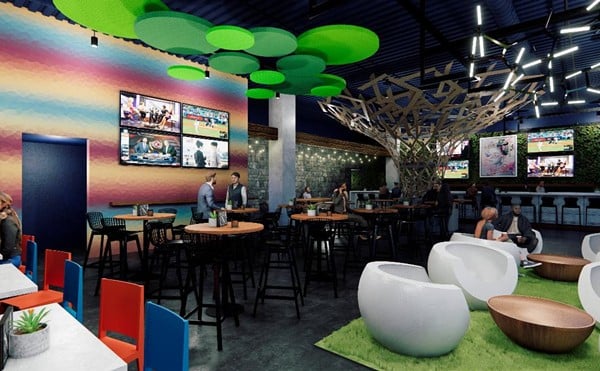|
"I wonder if Democrats and Republicans eat differently?" I casually suggest one night at dinner. I've always seen food as a marker, something that provides a sense of identity and helps distinguish "us" from "them." And I've never seen two groups more "us-er" or "them-er" than the modern incarnations of our county's two political parties.
Democrats and Republicans seem so drastically different in every other way that it's natural to assume this would spill over into dining habits.
And after living through the last two presidential cycles, I was hoping I had hit on a simple way to really know where candidates stand. Attack ads and "debates" weren't working for me, so maybe a meal plan would.
If I knew how the party ate, I might finally have something concrete on which to base my voting decisions. If a party shared my food loves, couldn't I be certain they'd embrace my other values as well?
At first glance, food and politics might not seem to have much in common beyond the traditional pancake-flipping campaign photo op or rubber-chicken fund-raising dinner.
Actually, the two have been playing footsie under the covers for a long time.
The highest office has a history of influencing the nation's dining trends. John F. Kennedy, who had a penchant for French food, hired French-born Rene Verdon as White House executive chef in 1961. I don't think it was an accident that the PBS cooking series The French Chef first aired with Julia Child only two years later.
After three decades of Continental cuisine, the Clinton White House made a move toward regional American cooking when they lured Walter Scheib III and his fondness for fresh, local ingredients from The Greenbrier resort. Not so coincidentally, the Chef's Collaborative, a national group that promotes sustainable cuisine, emerged in 1993 and chefs' emphasis on local, seasonal ingredients exploded across the country that same decade.
When Laura Bush fired Scheib last year, he publicly cited stylistic differences. But according to the blogoshpere, the rift developed because the Bushs asked this classically trained chef to stop using French cooking techniques and recipes after President Jacques Chirac refused to support the U.S.-led invasion of Iraq.
Foreshadowing Scheib's dismissal, in 2003 Representatives Robert W. Ney (R-Ohio) and Walter B. Jones (R-North Carolina) declared that all references to French fries and French toast on the House of Representative's restaurant menus would be removed. (Let Freedom Fries reign!) Locally, the sounds of this culinary battle reverberated in the dining room at The Precinct when Jeff Ruby decided to stop serving French wines for a time.
In spite of this record, I eventually shrugged off my initial question as my usual "partisan liberal grousing." Until I ran across the book How to Eat Like a Republican, that is. Maybe I wasn't loony after all.
Written by Susanne Grayson Townsend, a self-avowed Republican, the book offers a tongue-in-cheek portrayal of Republican feeding habits, which go a little like this: First, the cocktail is of utmost importance. And appetizers? Something to put in the hand not holding the cocktail. Republicans don't like fish, but shrimp is OK, especially if it's free. Red meat is the official party protein, and vegetables are fine as long as they are cooked beyond recognition.
The recipes don't exactly add up to a conservative culinary tour de force, but I felt certain they could be the beginnings of a food ballot. In today's partisan world, a Democratic table would have to be a parallel universe to a Republican feast. So Dems wouldn't drink, or they'd just have one glass of red wine with dinner, for the antioxidants. (Given the double-entendre of the name of the national organization Drinking Liberally, I have my doubts about that conclusion.) They'd also prefer fish to beef and take their veggies raw, thanks.
I went back and searched the library shelves in vain for How to Eat Like a Democrat to confirm my theory. What? Are you telling me the Dems didn't shoot back? The mommy party doesn't have a how-to cookbook?
Lacking a Democratic food bible, it was time to go to the source. To shed some light on a liberal food platform, I hounded local politicians for some answers. In a rare moment of bipartisanship, I contacted the entire Cincinnati City Council (four Dems, one Charterite and two Republicans), Mayor Mark Mallory (Democrat), Vice Mayor James Tarbell (Charterite) and the two Ohio gubernatorial candidates — Ken Blackwell (Republican) and Ted Strickland (Democrat) — to ask for a list of their five favorite foods. Tarbell, Strickland and council members Laketa Cole, Jeff Berding, David Crowley and Cecil Thomas (Dems) and Charterite Chris Bortz stepped up to the table.
While Strickland was the only one to include fresh fruit on the list (peaches from Branstool Orchards in Utica, Ohio), he also included two red meats — Frisch's Big Boy and pot roast — as well as bacon as part of his favorite breakfast from Paul's Restaurant in Columbus.
Crowley, like JFK, likes soup. (According to Kennedy's Presidential Library and Museum Web site, he was particularly fond of New England fish chowder.) Two of Crowley's favorite dishes are bean soup and Bouillabaisse.
Crowley and fellow council members Thomas and Cole include vegetables on their lists, even if Cole's creamed spinach and Thomas's greens would qualify as cooked to death. And I would argue with anyone that lima beans (Crowley) technically fall into their own food group — little bags of paste.
Bortz lists pizza for four of his five favorites. A slice could be held in one hand as an appetizer, but there's no a way he could balance his last item, a four-way, and a cocktail.
Meatloaf makes a few appearances in Townsend's book, including the artery-hardening Bacon Cheeseburger Meatloaf, but it also appears on Crowley's and Berding's lists. This, along with Berding's taste for burgers and steak, might peg him as a Republican, but he also likes lobster — a shellfish, yes, but free, I think not.
Global flavors make an appearance in Republican and Democratic recipe files. Righty guacamole and a foo yung tossed salad nestle beside dishes reminiscent of the Eisenhower era — Vel-Veto Power Ro*tel Dip and deviled eggs. International dishes such as Chicken Pad Thai and JeanRo's Pots de Crème snuggle in just as comfortably alongside the home fries from Tucker's, goetta and Skyline that appear on local politicians' lists.
Pad Thai, pots du crème and lobster. Steak, meatloaf and goetta. How's a voter to make sense of it all! If I knew which 2008 presidential candidate ate dark chocolate and peach cobbler, I'm sure my worries would be over.
But just when you think you have a system, someone throws a wrench into it. Politics, like most things, aren't as black and white as the parties would like us to believe. Our choices aren't simple enough to be summed up in a meal or a 30-second TV spot.
So it looks like we'll just have to decide how to cast our votes the old-fashioned way this season — researching the candidates and paying attention. And if that doesn't work, ask the guy behind you at the polls what his favorite food is and who he's voting for. It never hurts to have a backup plan. ©





